Uleiurile naturale sunt din ce în ce mai des folosite pentru finisarea lemnului. Întoarcerea către natură, către produse naturale, curentul bio tot mai prezent, i-a făcut pe mulți să-și dorească să folosească uleiuri naturale când au de protejat o bucată de lemn. Dar nu toate produsele de finisare pe care scrie ulei sunt naturale 100%. Mai mult, există mai multe tipuri de uleiuri naturale, iar o clarificare privind utilizarea lor este necesară.
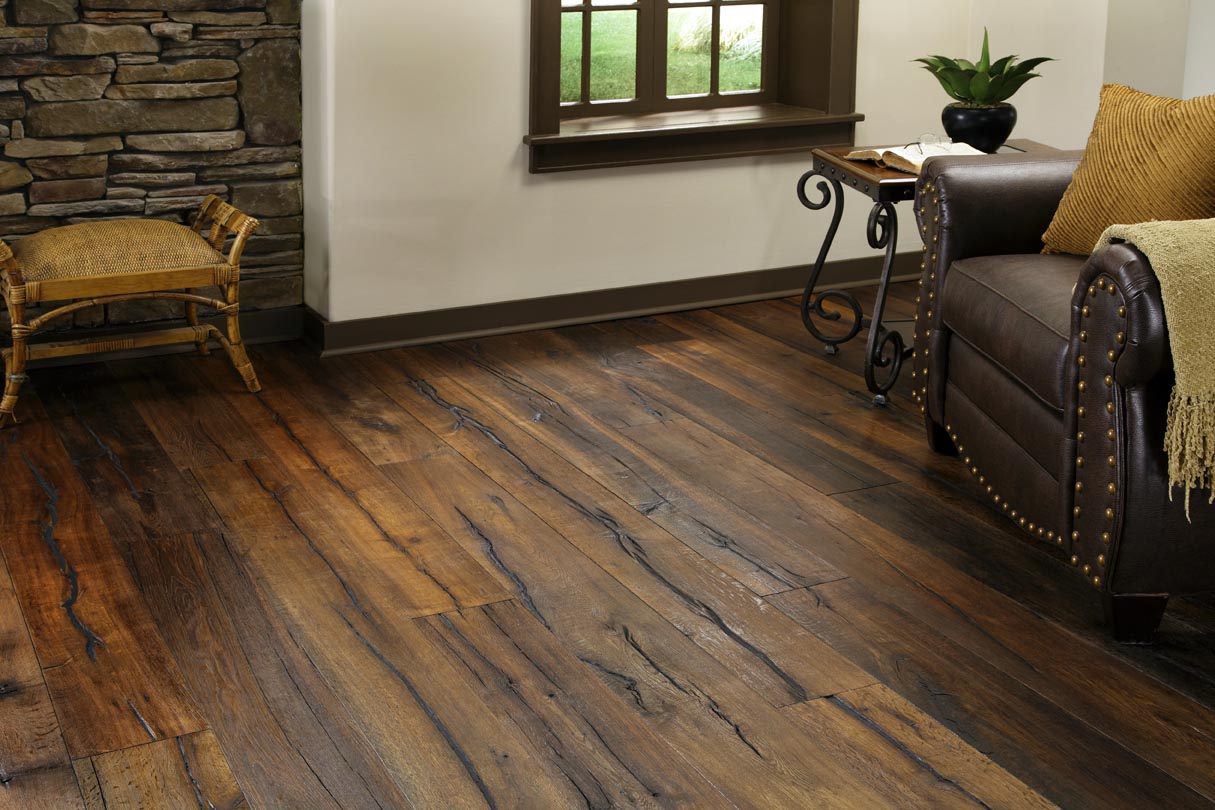
photo source: cosca.org
Linseed oil, natural or enriched
Linseed oil este unul dintre cele mai folosite produse în Europa. Uleiul de natural obținut prin presarea semințelor de in se usucă foarte greu, procesul durând săptămâni întregi. Pentru a-i grăbi uscarea, uleiul se tratează prin fierbere la 280-300 °C. Rezultă tot un produs natural, iar timpul de uscare se reduce semnificativ. Pentru protecția lemnului se aplică 3-5 straturi de ulei, cu timp de uscare între straturi de minimum 24 de ore.
Uscarea poste fi grăbită și prin adăugarea de substanțe chimice numite sicativi, iar un astfel de ulei de in se numește sicativat. Adăugarea de substanțe sicativante scoate uleiul din gama produselor naturale în totalitate. Dacă vă doriți un produs complet natural sau bio, recomandarea este să verificați eticheta unde nu trebuie să apară conținut de produse chimice.
Uleiul de in se folosește și la obținerea vopselelor alchidice. În acest caz nu mai este vorba de un produs bio pentru că este amestecat cu rășini alchidice și produse sintetice obținute în urma unor procese chimice. Informații suplimentare despre uleiul de in puteți găsi here.
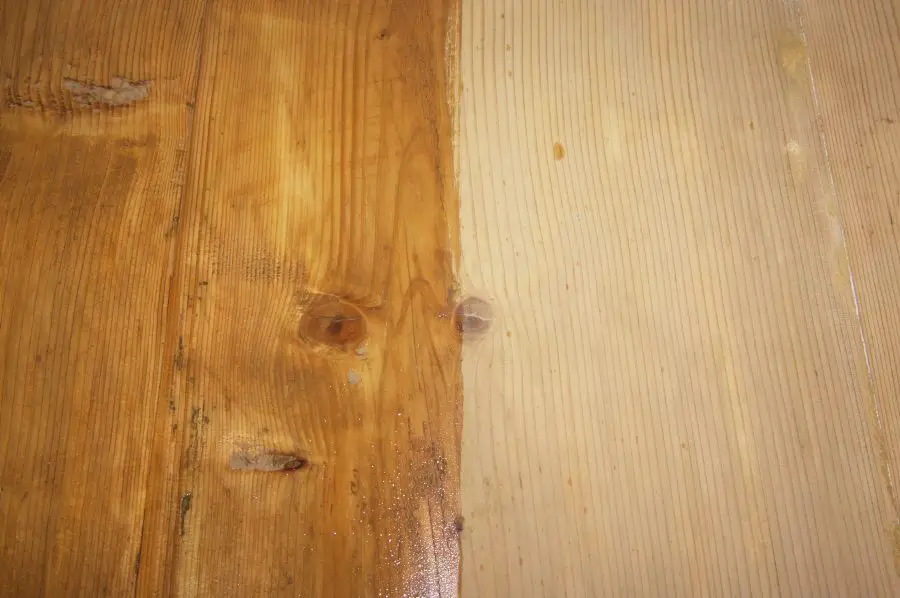
Uleiul de tung – natural, netoxic și rezistent
With tung oil se obține cea mai rezistentă și mai frumoasă finisare naturală pentru lemn. El este obținut prin presarea semințelor nucilor de tung, un copac care crește în centrul și sudul Chinei, în jurul râului Yangtze. A fost folosit din cele mai vechi timpuri, fiind menționat și în scrierile lui Confucius, în jurul anului 400 îH. Chinezii foloseau uleiul pentru impregnarea lemnului bărcilor, a pielii, hârtiei și chiar a hainelor pentru a le face impermeabile. Aflați mai multe despre uleiul de tung here.
Uleiul de tung se folosește singur sau amestecat cu alte tipuri de ulei. Pentru a obține maximum de rezultat se recomandă o metodă specială de aplicare. Primul strat se aplică normal , cu cârpa, după care este lăsat la uscat 20-24 de ore. Aplicarea celui de-al doilea strat se face prin șlefuire, punând puțin ulei pe hârtia de șlefuit. Așa uleiul pătrunde mai adânc în lemn. O prezentare a metodei puteți vedea here.
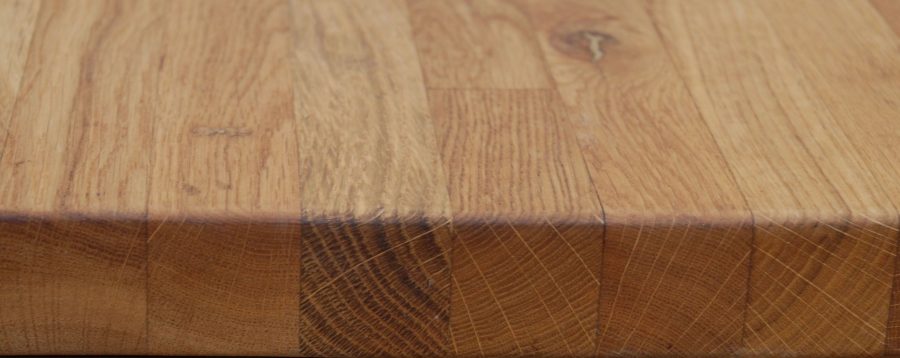
photo source: tungoil.co.uk
Danish oil - a blend of oils
Finishing with Danish oil (uleiul danez, în traducere) este cel mai des întâlnită pe site-urile de specialitate. Nu este un produs cu o compoziție fixă, ci o denumire generică a unui amestec de uleiuri. Denumirea vine de la aspectul lipsit de luciu al mobilei scandinave și a apărut în a doua jumătate a secolului al XX-lea, atunci când această mobilă a început să fie exportată în toată lumea.
Compoziția este diferită în funcție de producător. În formularea Danish oil se pot găsi uleiuri naturale vegetale (ulei de tung, de in, de mac, de soia), ulei mineral, rășini naturale și sintetice, white spirit, aditivi. Corpul uleiului (substanța solidă care rămâne după evaporarea solventului) poate varia de la 10% până la 50%. Evident, produsul este natural atunci când nu are în compoziție materiale sintetice, iar calitatea lui este cu atât mai bună cu cât conține o cantitate mai mare de ulei de tung.
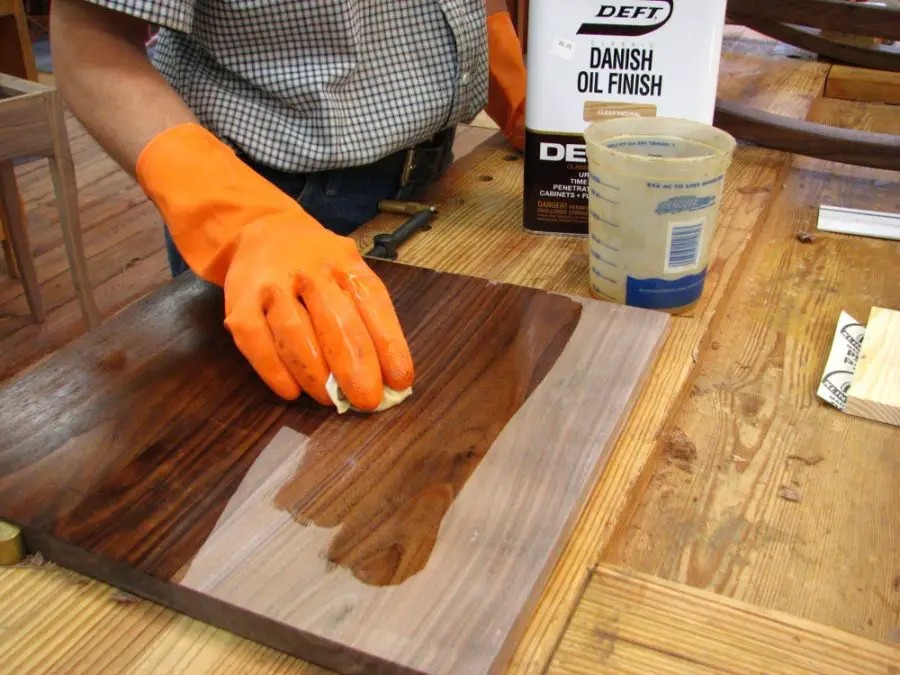
Teak oil - a recommended product for outdoors
Ca și Danish Oil, teak oil este un amestec de uleiuri naturale, materiale sintetice, aditivi și solvenți. Numele poate crea confuzii deoarece induce ideea că este un ulei obținut din teak wood (teak). Denumirea vine însă de la faptul că este folosit pentru finisarea mobilierului de exterior, mobilier care este făcut de multe ori din lemn de teak. Uleiul natural folosit în principal pentru uleiul de teak este cel de in. Aditivi folosiți la formularea lui îl fac rezistent la acțiunea radiației UV și a factorilor de mediu.
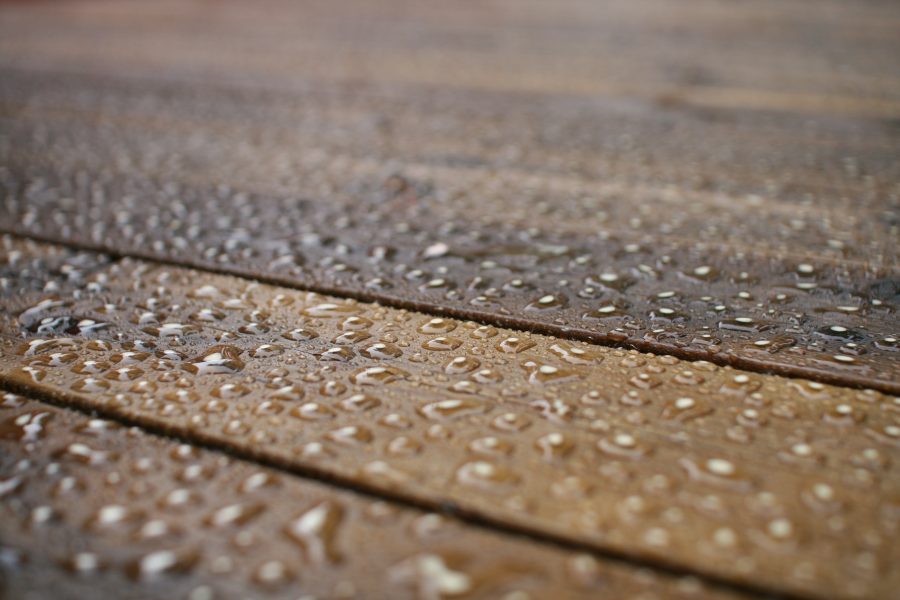
photo source: larre.com
Uleiul mineral – recomandat pentru ustensilele din bucătărie
Mineral oil este produs rezultat din distilarea petrolului în procesul de obținere a benzinei și a altor produse petroliere. După purificare, este incolor, inodor și poate fi folosit în industria farmaceutică și cea cosmetică, la obținerea cremelor și a loțiunilor. Este recomandat pentru finisarea bolurilor și a ustensilelor din lemn pentru bucătărie.
Folosirea uleiurilor vegetale nu este recomandată în acest caz pentru că obiectele devin lipicioase și se îmbâcsesc.
Other natural oils
În amestecurile de uleiuri se mai folosesc și uleiuri naturale de floarea soarelui, măsline, soia, mac, șofran, dar ele nu sunt folosite separat pentru finisarea lemnului. De asemenea, există materiale ecologice de tipul uleiului de cocos, de palmier sau alte astfel de uleiuri, care se folosesc local și se găsesc pe site-urile sau în magazinele de specialitate.
Informații generale privind folosirea uleiurilor:
- Este un mod de finisare foarte popular, folosit peste tot în lume.
- Umiditatea lemnului înainte de uleiere trebuie să fie în intervalul 6-14%.
- Colorarea lemnului este bine să se facă înainte de aplicarea uleiului. Baițurile folosite trebuie să fie pe bază de apă sau solvent, nu pe bază de ulei pentru a nu reduce absorbția ulterioara a uleiului în lemn.
- Uleiurile asigură protecție la umiditate, uneori și la pătări, dar nu și la agresiuni mecanice.
- Aplicarea uleiurilor este simplă, cu pensula sau prin ștergere cu cârpa. După aplicare, excesul se îndepărtează prin ștergere cu o cârpă curată.
- În general, peste suprafețele uleiate nu se mai poate aplica nimic. Produsele hidrodiluabile se cojesc, iar cele pe bază de solvenți organici sunt incompatibile. Singurele compatibile sunt cele pe bază de white spirit (petrosin), dar și acestea, dacă lemnul este saturat în ulei, au aderența foarte scăzută. Dacă se dorește aplicarea unui strat de lac sau vopsea, este bine să se șlefuiască înainte lemnul uleiat. În mod normal, uleiul nu pătrunde mai mult de 2-3 microni în lemn, așa că nu va fi foarte greu de îndepărtat. Sau obiectul este lăsat minimum 6 luni pentru ca uleiul de la suprafață să fie îndepărtat prin utilizare sau de factorii naturali (ploaie, vânt, soare).
- Suprafețele finisate cu ulei au nevoie de întreținere și reîmprospătare periodică.
- Oils prezintă fenomenul de self-combustion (oxidare la lumină, cu degajare de căldură) și pot genera incendii. Nu lăsați niciodată cârpele îmbibate cu ulei aruncate la întâmplare.
Uleiurile naturale au fost mereu folosite pentru a proteja lemnul. În trecut erau doar uleiurile naturale, acum avem și din cele sintetice. Produsele pe bază de uleiuri sunt folosite pentru a proteja și lemnul care stă la exterior, fiind de multe ori chiar mai eficiente decât unele produse sintetice.
I hope you find the above information useful. As always, additions are welcome. And if you have any questions or queries, please leave them below in the space provided. I will be sure to reply.
















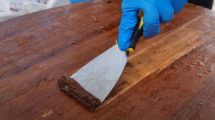

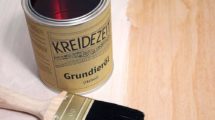





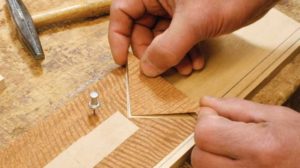

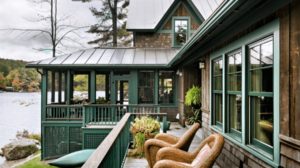




Hello. I have two pieces of furniture that I think are oiled: a rosewood table and an oak desk. The box the table came in actually said - oiled. Both have matt surfaces. What oil could I coat them with without changing the colour and the surface remaining matt? Thank you!
Good evening.
If it says oiled they are definitely oiled. But why would you want to apply another coat? Oil doesn't overcoat. This is what makes the surface matt. If too much is applied the surface becomes shiny and in very hot periods the oil expands and the surface becomes greasy. The oil is applied to the topcoat and then the excess is wiped off.
The best oils for furniture are tung oil or Danish Oil (which is a blend of oils).
All the best.
Hello. I have two recently made traditional peasant chairs with traditional motifs that I would like to give them the same dark to black colour similar to the authentic ones. What oil could I cover them with? Thank you!
Hello.
You can use tung oil or linseed oil. Commercially available natural oils are blends of several types of oil. The best known is Danish oil, an oil that has quite a lot of tung oil (the best and most beautiful) in its composition. The easiest way is to use spicy linseed oil (it dries faster than untreated). Information about oils you can also find here.
All the best!
sicativate does not equal sicativaNt
Hello! Can tung oil or flaxseed oil also be used in resin meals? How does the resin behave with the oil?
Hello.
Oils can only be coated with products that have white spirit as a solvent (oil-based paints, alkyd paints and other such products). Other materials have no adhesion to the oiled substrate. This is also the case for epoxy products. I have never tried to pour epoxy resin on oiled wood, but from what I have read, nobody recommends applying resin over oil precisely because of this lack of adhesion.
All the best!
Hello.I would like in the future to refurbish a peasant house,it is made of oak barrels and I would like to recommend a product that will keep it as long as possible,and on old wooden utensils with what can be given against decay because they are very old.Thank you.
Good evening.
Treatments against caries are quite harsh. The wood should be enclosed in an enclosure where special substances are sprayed (there are specialised companies where you can buy them. A simple search on the net for "antique substances" and you will find them). But first you need to see if the wood has been attacked by decay and if they are still in the wood. In silence you can hear the carrion gnawing on the wood. It is a specific noise, impossible to confuse.
For protection I recommend oil or wax. Oak wood is hard, beautiful and durable and it is a shame to varnish it, especially if it is old. Linseed oil protects it very well, both inside and out. Wax is not as resistant.
All the best!
I have always used antifreeze combined with water for cavities and applied it on wood.Being combined with water and sweet the cavities will "taste the sweetness" and die.
Good to know. Being advice from experience is all the more valuable.
All the best!
Good evening where can I buy Danish oil thank you
Good evening!
Find Danish Oil at Fine Tools (finetools.ro).
All the best!
Don't forget to subscribe to the printed Wood Magazine! For only 58 lei/year you can find out news in the field, discover craft ideas or trade secrets. We remind you that the content in the printed magazine is different from the one on the website. Details in the link below.
Thank you!
https://revistadinlemn.ro/product/abonament-revista-din-lemn/
Good evening! I want to do a walnut cladding on a wall in my bedroom. I would like to mention that the walnut wood will not be planed but just a little bit finished with enamel. I want to bring out the wood grain and the curls from cutting the wood. What oil do you recommend to highlight the wood?
Hello.
Tung oil is the most beautiful and the one that best highlights the wood grain. It is also the most expensive. Another good product is Danish oil. It is a mixture of tung oil and linseed oil. You can also use linseed oil. It is cheaper and there is not much difference between them. Because it's walnut wood, a very beautiful wood with a great design, I would finish with tung oil or Danish oil.
All the best!
Hello,
I have a 1.8 m mulberry wood carving that I would like to put outside, I would like to treat the wood with oil, can you tell me what kind of oil would be suitable?
I would also like the lamn not to crack over time.
How should I proceed?
Sincerely,
Marius Ghete
Hello.
You should use linseed oil-based outdoor polish. To be UV resistant linseed oil needs a slight pigmentation and the lacquers have pigments (even if they are transparent).
With the appearance of cracks it is more difficult. It depends on the moisture content of the wood. Oil allows the wood to naturally exchange moisture with the environment and this is good because it reduces tension. But the water must not be forced out, i.e. the statue should not be placed in direct sunlight. If the humidity in the wood is high, the sun forces the water out and tensions can occur, leading to cracks.
All the best!
Don't forget to subscribe to the printed Wood Magazine! For only 58 lei/year you can find out news in the field, discover craft ideas or trade secrets. We remind you that the content in the printed magazine is different from the one on the website. Details in the link below.
Thank you!
https://revistadinlemn.ro/product/abonament-revista-din-lemn/
Very interesting articles about wood finishing.
I would like to make a jewelry box with a water-based bath. What would be better to give it a shine? Initially I was thinking shellac but it doesn't seem like a process more for the experienced. Is it possible to use an oil to give it the desired shine or do I still have to use a varnish?
Hello!
You can also finish with shellac if you dare to work. For a good result, many coats of varnish should be applied. Below is a link to the application of shellac, maybe it will help.
If you want to have a very high gloss then you should use a high gloss polish (over 90 gloss). It's not easy with polish either because the gloss will apply any flaws and you have to sand between coats.
With oil is the easiest. You don't get mirror shine, but you do get a silky, very nice one. You need to apply 2-3 coats, with 24 hours drying time in between. After application let it absorb very well for 15-20 min and then wipe off the excess. At the end you can leave the oil layer or you can apply a layer of wax and polish it very well the next day with a clean cotton rag or a polishing machine with a polishing pad. You will be delighted with the result.
Good luck!
https://revistadinlemn.ro/2017/08/18/french-polish-metoda-clasica-de-aplicare-a-shellac-ului/
Hello,
I want to make a path in the garden from 8cm thick rounds of acacia. The manufacturer told me that I don't need to apply an oil treatment. I would like to point out that no glue is used, the rounds are placed on a bed of sand a few centimetres thick under which there is a film that prevents the growth of plants. The spaces between the rounds are also filled with sand.
Do you think I should protect the wood with any oil? Thanks
Hello.
The manufacturer is right. Salcam is a very tannic and hard wood, with very good outdoor resistance. It is the wood that can resist very well unprotected outside. Even if it is covered with a layer of mould it is only superficial and if you scratch it you will immediately discover totally healthy wood. And insects have a hard time attacking it because it is hard and dense.
More information about salami can be found in the link below.
All the best!
https://revistadinlemn.ro/2016/11/02/salcamul-cel-puternic-rezistent-si-frumos/
Hello,
I want to make a pathway in the garden out of acacia rounds. The rounds are laid on a bed of sand, and the spaces between them are also sanded, no glue is needed. Is any treatment needed, the producer told me no? Thanks
Hello.
The manufacturer is right. Salcam is a very tannic and hard wood, with very good outdoor resistance. It is the wood that can resist very well unprotected outside. Even if it is covered with a layer of mould it is only superficial and if you scratch it you will immediately discover totally healthy wood. And insects have a hard time attacking it because it is hard and dense.
More information about salami can be found in the link below.
All the best!
https://revistadinlemn.ro/2016/11/02/salcamul-cel-puternic-rezistent-si-frumos/
Hello,
I made a wooden cutlery organizer. (The bottom is 10mm pine plywood and the rest of the wood is beech.) Can you please tell me what I could put on it for the finish considering the cutlery will come in contact with the finish? I exclude paint, I want the wood to show through. Thank you very much, have a nice day.
Good evening.
You have 2 choices, varnish or oil. As varnish I recommend you to use palouretanic varnish or water soluble varnish. Polyurethane varnish becomes inert after hardening and is safe for such uses (even safer than some water-based varnishes). It is also very resistant to scratches or mechanical shocks.
I would go for the oil option. You must use food safe mineral oil. Oiled wood looks great and is very resistant to moisture. The resistance to scratches and shocks are lower and depend on the strength of the wood species used.
All the best!
Don't forget to subscribe to the printed Wood Magazine! For only 58 lei/year you can find out news in the field, discover craft ideas or trade secrets. We remind you that the content in the printed magazine is different from the one on the website. Details in the link below.
Thank you!https://revistadinlemn.ro/product/abonament-revista-din-lemn/
[...] and against decay, the wood must be protected with varnishes or natural materials (wax, oil). These require regular maintenance. In addition, the house itself should be checked a [...]
Good evening I would like to buy Danish oil and I don't know where you could guide me, thank you.
good evening, where can I get a food oil for oak?thank you!
Good evening!
I suspect you need food safe mineral oil. It is the oil used for finishing chopping boards, bowls or other wooden objects used in the kitchen. You can find such a product herebut it is not the only source. If you search the web for "food safe mineral oil" you will find other sources.
All the best!
Don't forget to subscribe to the printed Wood Magazine! For only 58 lei/year you can find out news in the field, discover craft ideas or trade secrets. We remind you that the content in the printed magazine is different from the one on the website. Details in the link below.
Thank you!
https://revistadinlemn.ro/product/abonament-revista-din-lemn/
Good evening! What would you recommend as a finish for ceiling-mounted pine paneling? Part is also installed in the bathroom and there I think re need a different treatment.
Good evening!
My opinion is that oil is the best choice. It protects very well from moisture and penetrates deeply. In the bathroom such protection is needed. You can also use a varnish with good resistance to humidity (polyurethane), but if the wood moves due to humidity variations, cracks can appear in the film. Over time the varnish will flake off and the whole finish will have to be re-done. The oil lets the wood move without the risk of cracking.
All the best!
Don't forget to subscribe to the printed Wood Magazine! For only 58 lei/year you can find out news in the field, discover craft ideas or trade secrets. We remind you that the content in the printed magazine is different from the one on the website. Details in the link below.
Thank you!
https://revistadinlemn.ro/product/abonament-revista-din-lemn/
Good evening, please give me some advice on the treatment of wooden trays and bowls. Which oil to use tung oil or mineral oil to bring out the grain and longer lasting gloss of the wood? And please explain the process by which these oils are used. So far I have used linseed oil and it loses its sheen very quickly. I must be wrong in my application.
Hello!
Wood looks best when treated with tung oil, but mineral oil is recommended for objects that come into contact with food. Disappearance of the shine means disappearance of the oil or on the contrary an excess of oil left on the surface that fixes dirt. The oil is applied in successive layers with 24 hours drying time between them. Apply each coat in excess, leave 30-45 min. for the wood to absorb, then wipe off the excess. Repeat the operation until the wood is saturated and can no longer absorb. Never leave the oil undried because the surface will become sticky.
Oil is not a long-lasting finish, especially if objects are washed. To keep its shine after 6 months to 1 year, another coat of oil (or more, if the wood requires it) should be applied.
All the best!
https://revistadinlemn.ro/2019/04/17/7-reguli-de-respectat-la-finisarea-cu-ulei-a-lemnului/
Hello, thank you very much for all your help, have a nice weekend!!!
Good evening, I would like you to help me if you could kindly give me some advice. I am making some wooden windows for my house, I prefer wooden ones more than plastic ones. I would like you to recommend me a varnish to use, because most of the commercial ones don't last in time, outside, and what treatments I should apply to the wood before applying the varnish on it. Thanks so much for your attention and have a pleasant evening.
Hello!
Products on the market have a shelf life of 2-3 years to 12 years. The highest declared shelf life, 12 years, I have encountered in Sodalin, Lake Tinova. It is a varnish based on white spirit (petrosin). Sadolin is a good company.
Oil-based products can also be used. In this case the water protection is very good, but the finish needs to be maintained, as precipitation washes the oil away over time. Maintenance is simple, practically every 2-3 years, after washing the windows, the frames are wiped with a rag dipped in the oil used for painting or one recommended for maintenance. Kreidezeit representatives say that their oil paint lasts 6-8 years if properly applied.
You can also use water-based varnishes. Quality brands are Sirca, Ica (Lomilux), Milesi, Sikkens, Sayerlack.
No matter what product you use, how you apply it is very important. Label directions must be followed exactly. Deviations can lead to significant decreases in strength.
In the link below you have some guidelines for the wood used on the outside and how to finish it.
All the best!
https://revistadinlemn.ro/2018/08/03/12-reguli-simple-pentru-a-avea-constructii-din-lemn-rezistente-la-exterior/
Thanks a lot for your help! Have a wonderful evening!
Hello, I would need some advice if possible, I have applied natural parquet oil over the oak floor. I applied more than usual, thinking I would leave 30 minutes for the floor to soak in as long as it wanted, and then wipe off the excess, but being very late I only wiped off part of the surface, the other remaining for the morning. The surface where I wiped the excess remained very nice, but on the other the oil dried, and now it is quite sticky and traces remain to the touch. I've tried wiping it off, with all sorts of rags, but I can't and I don't know how I can get the excess off now, or at least if it will go away by itself, with time. Thank you very much!
Hello!
It is very hard to erase and by itself it does not go away. You will have to try to remove it as soon as possible because, over time, it gathers dirt and gets uglier and harder to get rid of. Try using oil-specific solvents, i.e. white spirit (i.e. petrosin or gas - petroleum-derived thinners) or turpentine. You will have to insist because the oil is now oxidized and does not dissolve easily, being basically another substance. If it doesn't crack try wiping with thinner and then immediately sanding. Don't use too thin paper, it won't help. Try 180 or 220 or medium abrasive sponge. You may get down to the wood and have to apply a new coat of oil. If you sand without thinner the sandpaper or sponge will clog up very quickly and you will have to change them very often.
Good luck!
Thank you very much for your help. This mistake I definitely won't forget 🙂 I will try to find the thinners you told me about, but now because of the quarantine being harder, we will probably have to grind that part eventually 🙁
Hello,
Thank you for this valuable information.
I have a solid beech living room furniture, bought sh, doesn't look like it has been treated with anything. Can you please recommend a simple and non-toxic solution.
Hello!
Thank you for your appreciation!
I doubt the furniture hasn't been treated with something. It is probably a very thin layer of natural effect varnish (which has no sheen) or has been treated with oil or wax which, through use, has almost disappeared.
I would try everything with oil or/and wax. You can use linseed oil, Danish oil, tung oil, Kreidezeit oils. These are natural, non-toxic oils or oil blends. Finally, after the excess has been removed and the oil has dried, you can apply a layer of furniture wax and polish it with a cotton cloth after 3-4 hours. The wax will take on a silky sheen, very pleasant. But it is not mandatory to apply wax. Oils are products that can also be used as a top coat.
Below are some links that may help you.
All the best!
https://revistadinlemn.ro/2019/04/17/7-reguli-de-respectat-la-finisarea-cu-ulei-a-lemnului/
https://revistadinlemn.ro/2018/01/15/danish-oil-ulei-finisare-lemn/
https://revistadinlemn.ro/2020/06/10/uleiul-de-tung-uleiul-pentru-lemn-care-face-pelicula-si-rezista-foarte-bine-la-umezeala/
https://revistadinlemn.ro/2016/11/01/uleiuri-naturale-pentru-finisarea-lemnului/
https://revistadinlemn.ro/2018/05/15/ulei-de-in-cand-unde-si-cum-se-foloseste-cum-sa-ti-faci-singur-vopsele-de-ulei/
Which oil gives a dark look?
Good evening!
Pigmented oils, such as oil-based lacquers, stain wood transparently.
Natural wood oils, i.e. boiled linseed oil or tung oil, are darker in colour than olive oil, for example, but the wood does not colour, it just darkens slightly and looks wet.
All the best!
I'm back with another small issue and again I can say this is a great blog.
I bought an oak kitchen countertop and I want to coat it with tung oil. I have also seen the opinion that the first two coats are coated with 50% diluted oil with turpentine to get into the fibres better. In the blog you don't say anything about dilution and even in the video you don't use diluted. How do you recommend?
Also, the underside, not being exposed to anything, how many coats do you recommend, speaking more to the economic factor. Or do I still give 4 coats and then much less/not at all, given the awkward position?
Thank you.
Glad we can help.
Tung oil, unlike linseed oil, has a larger molecule. It will not penetrate as deeply into the wood as linseed oil, even if diluted. But, depending on the manufacturer, it can be more viscous or diluted. Turpentine helps if the oil viscosity is high. My recommendation is to dilute the oil if it is viscous and use turpentine conditioner oil. It is made from pine resin and smells more pleasant, not defensive like turpentine made from petroleum (white spirit).
The recommendation to have an equal number of layers is to balance the parts so that no deformation of the countertop occurs. Deformations are more visible when finishing with varnishes because they are harder. Oils are elastic and put less pressure on the wood. You also need to finish the underside to prevent moisture from getting in, but you can only apply 2-3 coats and refinish more sparingly.
Good luck!
https://revistadinlemn.ro/2020/06/10/uleiul-de-tung-uleiul-pentru-lemn-care-face-pelicula-si-rezista-foarte-bine-la-umezeala/
Thank you very much. All the best!